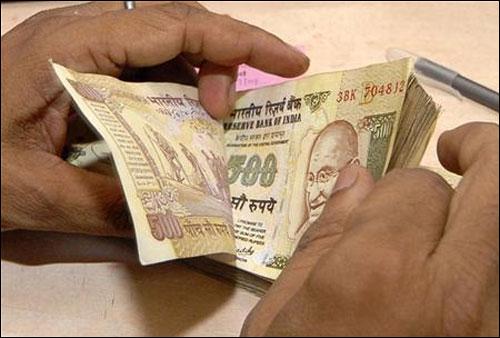
The Fisc and savings-investment gap lie at the heart of policy responses, writes Abheek Barua.
I noticed that the commentary on the country's external accounts (balance of payments) for the second quarter of 2012-13 released on December 31 has been considerably more than usual (and I am consequently left with little to add). This is not surprising given the fact that the current account deficit (CAD) printed at 5.4 per cent of the gross domestic product (GDP), is almost a percentage point above the average forecast put out by professional economists.
The degree of this imbalance should remind that the rupee remains extremely vulnerable - both to the vagaries of global financial markets that ultimately help fund CAD, and the imperative of sustained depreciation to ensure trade competitiveness.
In short, expect the rupee to be volatile going forward and accept the fact that, apart from short episodes of capital inflow-fuelled appreciation, the norm for the rupee would be to depreciate over the medium term rather than appreciate.
How bad is the situation and what can be done about it? I would hope that a ratio of CAD to GDP of over five per cent turns out to be an exception rather than a rule. A large part of the decline in Q2 has come on the back of an exceptionally large fall in exports of 12.2 per cent year-on-year. If the global economy does see a moderate recovery as we expect this year, exports could get a leg-up and help bridge the trade gap.
The other factor that dragged CAD down was tepid growth in private transfers. Private transfers or remittances from Indian expatriates grew by a meagre 3.2 per cent year-on-year compared to growth rates of well over 10 per cent in the past few quarters. One could, thus, assume that this was a one-off decline, likely to get reversed going forward.
Of course, there are counter-arguments. If export growth, and some recovery in investment indeed revive growth, it would tend to suck in non-oil imports into the economy, and that could offset the export effect. Oil imports are inelastic and will go up at a steady rate in the absence of a sharp increase in domestic retail prices.
Given this, if the global commodity cycle were to tick up again (say, on the back of some more progress on the US fiscal cliff negotiation), the oil bill could bloat. Gold imports have shown a considerable decline over the last financial year but the pick-up in Q2 over Q1 (-28 per cent compared to -47 per cent year-on-year) underscores the point that we still have a problem with bullion imports.
The decline in private transfers comes in a quarter in which non-resident Indian deposits have also slipped considerably. It is possible to argue that this synchronised fall in inflows from the Indian diaspora is the beginning of a trend.
The bottom line is that the Q2 CAD number cannot be wished away as an aberration and a set of policy responses are needed to ensure that this does not trigger a macroeconomic crisis. The kind of response that it elicits would depend on how the deficit is viewed. If it is seen essentially as a problem of excess imports, the solution lies in curtailing imports and pushing up exports. To start with, we need to find a way of restricting gold imports, and we should not rule out quantitative restrictions of some kind.
We should also consider raising tariffs on imports of other goods, particularly those that are imported from trading partners with whom we run a large trade deficit. The case of power equipment from China, in which the Arun Maira Committee has recommended a duty of 14 per cent (instead of the current zero level), comes to mind.
The second element of this strategy involves some degree of currency management by the Reserve Bank of India. I find no virtue in the central bank staying on the sidelines in a phase of sharp rupee appreciation, especially when there is a visible shortage of foreign currency reserves.
The financial markets have, incidentally, followed a sensible approach to gauging the direction and dynamic of the currency. The rupee is no longer considered part of the Asian currency pack; instead it is clubbed together with currencies like the Turkish lira or the Mexican peso that are associated with large CADs.
However, CAD is not about trade alone. Macroeconomics 101 tells us that CAD is simply the sum of the fiscal deficit and the domestic savings-investment gap. Thus, for a sustainable decline in the deficit, the deficits on the other side of the equation will have to decline. Consolidating the fiscal deficit is one of the challenges.
Back of the envelope calculations show that not only do we need to stick to the 5.3 per cent of GDP - which is now the revised target for the government - but also get the deficit well below five per cent in the next couple of years.
The other challenge is to make sure that if domestic investment recovers, the saving-investment gap does not prise CAD wide open again. There has to be a serious attempt to push household savings up, particularly in financial assets, so that a domestic resource crunch does not ultimately manifest in an external macro crisis.